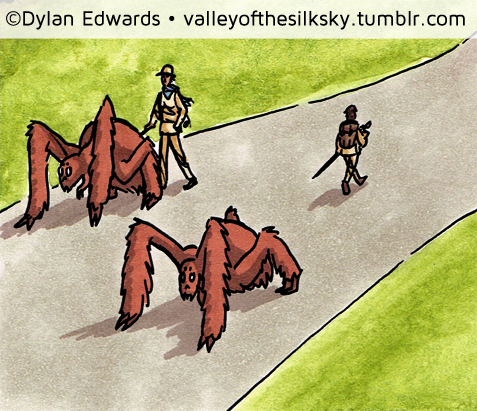 Millenia ago, the people of the Valley domesticated an animal known as a cloud spider*. Spider silk is exceptionally lightweight and has extremely high tensile strength, and the humans have been able to tease many uses out of an animal that yields a large quantity of silk.
Millenia ago, the people of the Valley domesticated an animal known as a cloud spider*. Spider silk is exceptionally lightweight and has extremely high tensile strength, and the humans have been able to tease many uses out of an animal that yields a large quantity of silk.
As humans have done with dogs, cows, etc., the people of the Valley have domesticated the cloud spider and bred multiple variations to suit specific needs. Mostly this is focused on producing different kinds of silk for different purposes, including varieties of silk that can be compacted, hardened, and moulded into all sorts of shapes. The resulting material is extremely durable, lightweight, and flexible. So in place of wood or metal, both of which are relatively scarce, most of their daily-use objects are made of silk.
So yes, the entire structure that houses the country of Pocalo and all its provinces is ONE GIANT SPIDER WEB that has been built up over the course of many thousands of years using construction-grade spider silk. Hence, if you are in any province but the very topmost, when you look up, your view of the sky consists mostly of silk. Hence the name “Valley of the Silk Sky.”
*Don’t worry, arachnophobes, it’s not actually technically a spider! It’s a MONOTREME. There are actual bugs in the Valley, but most of the larger incarnations like the cloud spider are really egg-laying mammals.

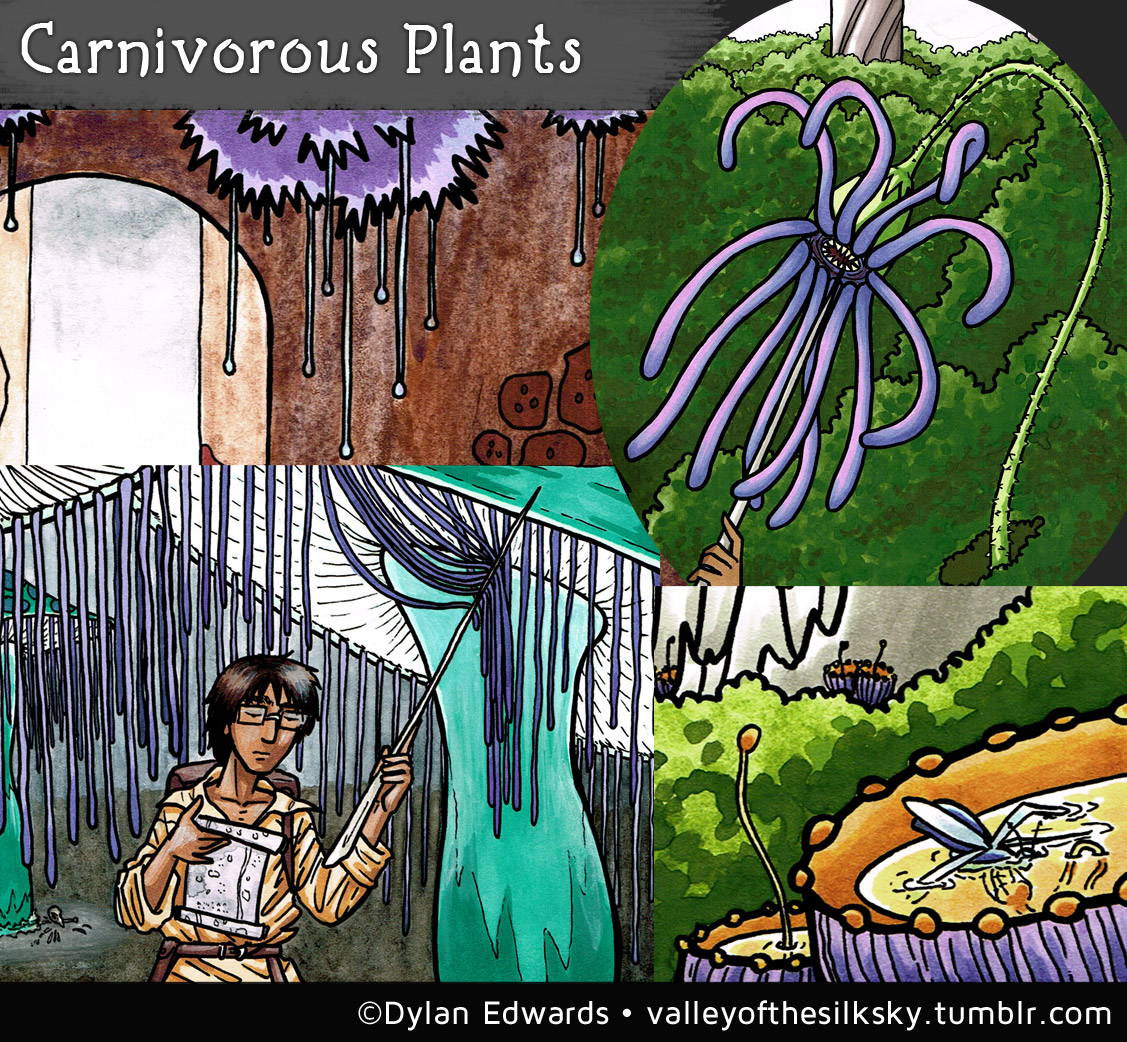
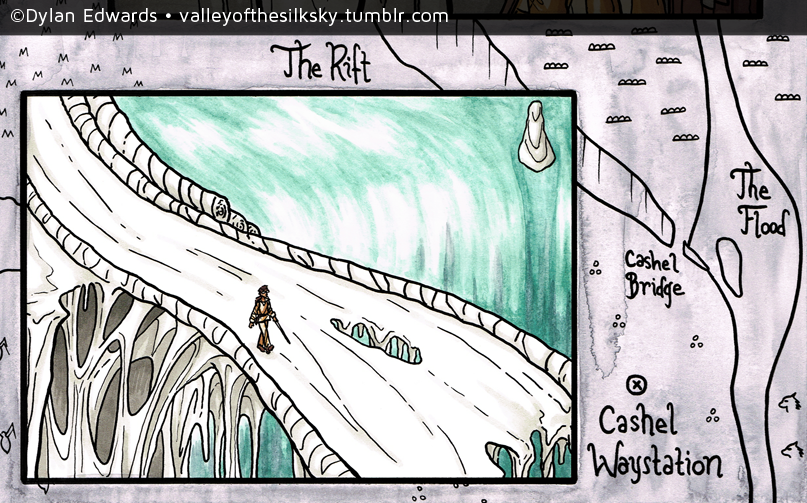
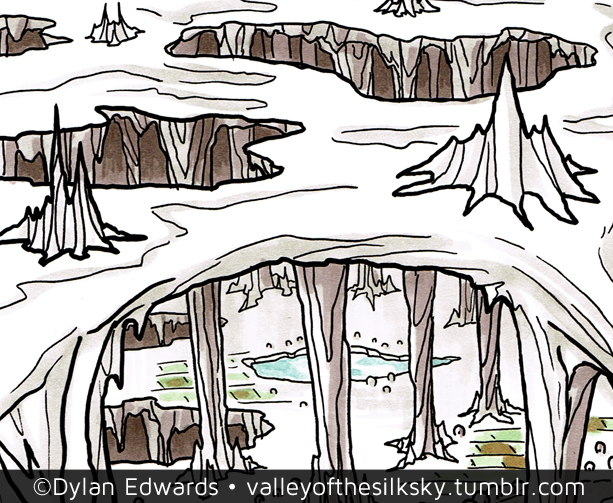
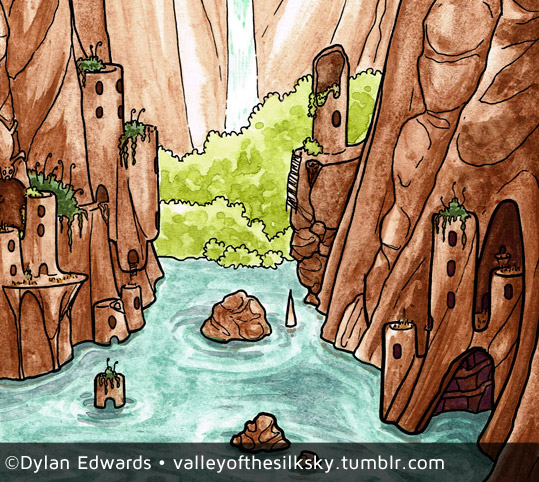 The Red Cities predate the giant web structure that houses the current provinces of Pocalo, but the people of the Red Cities were the ones who developed the technology to use cloud spider silk as a building material.
The Red Cities predate the giant web structure that houses the current provinces of Pocalo, but the people of the Red Cities were the ones who developed the technology to use cloud spider silk as a building material.